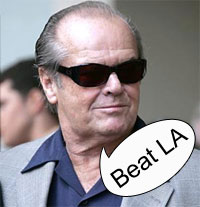Published June 16, 2010
I’m trying to get to the bottom of some confusion last night involving bars blocking access to reporters.
Our Sonari Glinton was turned away repeatedly from bars and pubs near TD Garden while trying to cover Game 6 for WBUR. Managers of two establishments told us the city had banned reporters from entering during the NBA Finals, and that they were just following orders. Sonari had to resort to hiding his mike to gather sound and do his job.
Thing is, I was in the same area and had no trouble. When I heard about the confusion, I asked a couple of cops on the street. They told me, in fact, no one was allowed to enter that Canal Street cluster after the third quarter as a safety measure — reporters were not being singled out, an officer told me. But Sonari got to the area at 7, well before the game began.
Margaret Evans, our senior editor, contacted one of the bars giving us trouble, a bar near Fenway, Cask’n Flagon, and received this e-mail response from Dana Van Fleet:
Superintendent William Evans from BPD has ordered that no bars or restaurants allow ANY media in any establishment for any playoff game.
Sorry!
It is within a bar’s rights to keep out whomever they want. But as far as I know, the Boston Police Department can’t order a bar to keep out certain people.
Margaret then contacted Boston Police spokeswoman Elaine Driscoll for clarification. Driscoll explained it was not the Police Department but the city’s licensing board that imposed the restrictions. She provided copy of a letter sent — restrictions that should not have barred Sonari from entering a bar.
Here is the relevant text from a letter sent to licensees on June 8:
Establishments may not use their premises as a location for remote broadcasting by the media. For example, licensees may not allow a television station to set up camera to broadcast (or tape for later broadcast) activities in or around the premises. This is a safety and order measure aimed at promoting crowd control at licensed establishments.
My guess is that this rule is meant to avoid those big, boisterous crowds that gather to be on TV. The police are rightly cautious. People have died celebrating Boston sports victories in recent years, including an 18-year-old Emerson student in 2004, when the Red Sox won the pennant. She was struck in the eye by a police projectile. And a 22-year-old Celtics fan died in 2008 while in police custody. He was said to have had heart problems. The U.S. attorney said in that case the police acted reasonably.
Of course, Sonari had no camera, and he was not broadcasting live. Driscoll forwarded us to the city’s licensing board, and we’re still awaiting a response.




